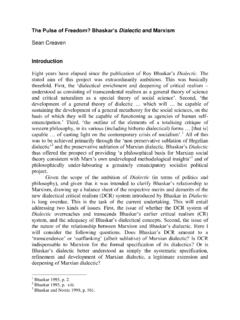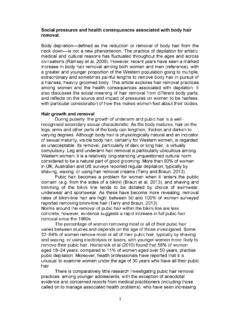Transcription of Prabhakar,G.P.(2008)Projectsandtheirmanagement ...
1 international journal of business and Management August, 20083 Projects and Their Management: A Literature Review Guru Prakash Prabhakar Bristol business School University of the West of England Coldharbour Lane, Frenchay Campus Bristol- BS16 1QY, UK Tel: 44-117-328-3461 E-mail: Abstract Over the years and more importantly in the recent past projects have been used as a delivery mechanism to do business and accomplish objectives. No wonder it has become one of the fastest growing professions in the world. Although the understanding of what constitutes a project and what doesn t continues to be a topic of debate.
2 This paper attempts to provide literature search on what is a project, its classification, characteristics, its life cycle, phases, tools etc. Keywords: Projects, Project Management Every one of us is a manager of projects! From a house wife to a production employee to financial analyst, from banker to physician, from engineer to administrator, from teacher to student, we all work on various tasks with deadlines. Regardless of our occupation, discipline, or location in an organization, we all work on tasks that are unique and involve people who do not usually work together.
3 The project may have a simple objective that does not require many people or a great deal of money, or it may be quite complex, calling for diverse skills and many resources. But the bottom line is that every one of us manages projects! 1. What is a Project? While there are several definitions of projects in the literature, one of the best has been offered by Tuman (1983), who states: A project is an organization of people dedicated to a specific purpose or objective. Projects generally involve large, expensive, unique, or high risk undertakings which have to be completed by a certain date, for a certain amount of money, with some expected level of performance.
4 At a minimum, all projects need to have well defined objectives and sufficient resources to carry out all the required tasks. In lines of the definition provided by Pinto & Slevin (1988), and accepted for the purpose of this research, a project can be defined as possessing the following characteristics: (1) A defined beginning and end (specified time to completion) (2) A specific, preordained goal or set of goals (performance expectations) (3) A series of complex or interrelated activities (4) A limited budget Diallo & Thuillier (2003) reviewed the project management literature outlined a set of evaluation dimensions which appear regularly although not with the same occurrence.
5 (1) Respect to the three traditional constraints (2) Satisfaction of the client (3) Satisfaction of the objectives as outlined in the logical framework (4) Project impacts (5) Institutional or organizational capacity built in the organization by the project (6) Financial returns (in the case of productive projects) or the economic or social benefits (in the case of public sector projects), and (7) Project innovative features (outputs, management or design) Vol. 3, No. 8 international journal of business and Management4In the words of Turner (1999), a project is an endeavour in which human, financial and material resources are organized in a novel way to undertake a unique scope of work, of given specification, within constraints of cost and time, so as to achieve beneficial change defined by quantitative and qualitative objectives.
6 As defined in A Guide to the Project Management Body of Knowledge (PMI, PMBOK Guide, 2000), a project is a temporary endeavor undertaken to create a unique product or service. Temporary means that every project has a definite beginning and a definite end. Unique means that the product or service is different in some distinguishing way from all other projects or services. Declerck et al., (1983, 1997), illustrate the political perspective of projects in this way: "a project is a whole of actions limited in time and space, inserted in, and in interaction with a politico-socio-economic environment, aimed at and tended towards a goal progressively redefined by the dialectic between the thought (the project plan) and the reality.
7 " Gittinger (1972) defines projects as a whole complex of activities involved in using resources to gain benefits. Gittinger (1982) explains that generally projects form a clear and distinct portion of a larger, less precisely identified program. The whole program might possibly be analyzed as a single project, but by and large it is better to keep projects rather small, close to the minimum size that is economically, technically, and administratively feasible. If a project approaches program size, there is a danger that high returns from one part of it will mask low returns from another.
8 Project is an activity for which money will be spent in expectation of returns and which logically seems to lend itself to planning, financing, and implementing as a unit. It is a specific activity, with a starting point and a specific ending point, intended to accomplish specific objectives. Usually it is a unique activity noticeably different from preceding, similar investments, and it is likely to be different from succeeding ones, not a routine segment of ongoing operations. It will have a well-defined sequence of investment and production activities, and a specific group of benefits, that we can identify, quantify, and usually determine a money value for.
9 Often a project will have a partially or wholly independent administrative structure and set of accounts and will be funded through a specially defined financial package. As maintained by Nilsson & S derholm (2005), planning and plans are intrinsic features of projects. Plans are meant to constitute and guide project team members as they work on realizing what ever project goals that have been set out for them. A plan can, however, only have a certain degree of sophistication. When project management practices on a day-to-day basis are examined, plans seem to dissolve and become less prescriptive. 2.
10 Characteristics of a Project Typically, most projects share most if not all of the five characteristics listed below. (1) A start and a finish (2) A time frame for completion (3) An involvement of several people on an ad-hoc basis (4) A limited set of resources (5) A sequencing of activities and phases 3. Classification of Projects within Categories and Sub-Categories (1) Project size (2) Project complexity (3) External or internal customer (4) Degree of customer involvement in the project (5) Levels of risk in projects (6) Major and minor projects within a category According to Gareis and Huemann (2000) the Project-oriented Company (POC)





